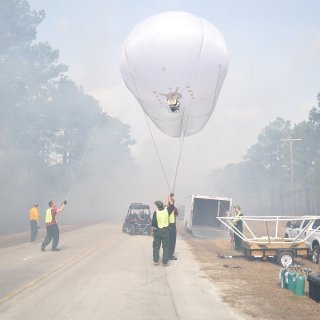EPA Research: Environmental Justice and Air Pollution

Clean air is important for everyone’s health. Yet, studies show that many people are disproportionately impacted by air pollution, including those who live in communities of color and low-income communities. Exposure to poor air quality has been found to cause short and long-term health effects, especially for older adults, children and pregnant women. The health burden of air pollution is higher for those living in areas of poor air quality. Residents of low-income neighborhoods and communities may be more vulnerable to air pollution because of proximity to air pollution sources such as factories, major roadways and ports with diesel truck operations. They also may be more susceptible to air pollution because of social and economic factors.
Research at EPA is contributing to a better understanding of the relationship between poor air quality and health disparities and investigating who is most vulnerable. The findings can help to mitigate pollution and assist with developing strategies to reduce the impacts of poor air quality on health. In addition, this work seeks to empower communities with the tools and information to measure and monitor their own air quality. This includes evaluating commercial, low-cost air sensors for public use, and developing online toolkits and mobile applications to empower citizen and community science projects.
EPA’s research linking environmental justice and air pollution includes:
Disproportionate Health Effects of Air Pollutants
Research has shown that certain populations are more susceptible than others to air pollutants. Residents of low-income communities may experience increased health impacts from air pollution due to many environmental, social, and economic factors. Researchers are working to better understand the factors that contribute to air pollution health disparities, such as sociodemographic factors, how diet modifies responses to air pollution, and the effect of chronic disease on respiratory and cardiovascular responses to air pollution.
Near-source Air Pollution
Living near sources of air pollution including major roadways, ports, rail yards, and industrial facilities can lead to health effects like asthma, reduced lung function, cardiovascular disease, and premature death. Children, older adults, people with pre-existing cardiopulmonary disease, and people living in low-income communities are especially at risk for health impacts associated with near-source air pollution. Researchers are conducting studies and modeling to:
- Assess near-source impacts for single source and complex multi-source environments.
- Understand factors influencing adverse health effects attributed to near-source impacts.
- Develop models and tools to quantify near-source emissions and exposures to guide community planning.
- Develop mitigation strategies to reduce emissions, exposures, and health effects.
Near Source Air Pollution Research
Air Quality Monitoring Tools for Communities
Researchers are working to provide air quality monitoring tools and resources for citizen science and community air monitoring projects. These efforts include evaluating commercial, low-cost air sensors for accuracy and quality; providing guidance for understanding air sensor data; bringing air sensor technology to communities through sensor loan programs; and developing a mobile application for reporting odors related to air pollutant emissions.
Public Health Intervention and Communication Strategies
Researchers are studying intervention strategies to reduce health impacts from exposure to air pollutants from vehicle and industrial emissions, as well as wildfire smoke. EPA is collaborating with other federal agencies, state and local agencies, and tribes to translate the science for public health communication and community empowerment. This work includes studies to evaluate the behavioral, social, and economic factors that may influence health outcomes in order to inform effective health risk messaging.
Reducing Wildfire Smoke Exposure
As climate change drives more frequent and larger wildfires, more people are being exposed to dangerous smoke from fires. Researchers are studying ways communities can be smoke-ready and prepare for wildfire smoke. Research underway includes testing commercial and more accessible, do-it-yourself air filtering devices to remove smoke from indoor areas. In addition, partnerships with outside experts are resulting in guidance to reduce smoke in commercial buildings and schools by preparing HVAC systems for smoke. Researchers are also working to improve health risk communication to various groups about smoke exposure before and during wildfires, reducing the public health burden of smoke episodes.
